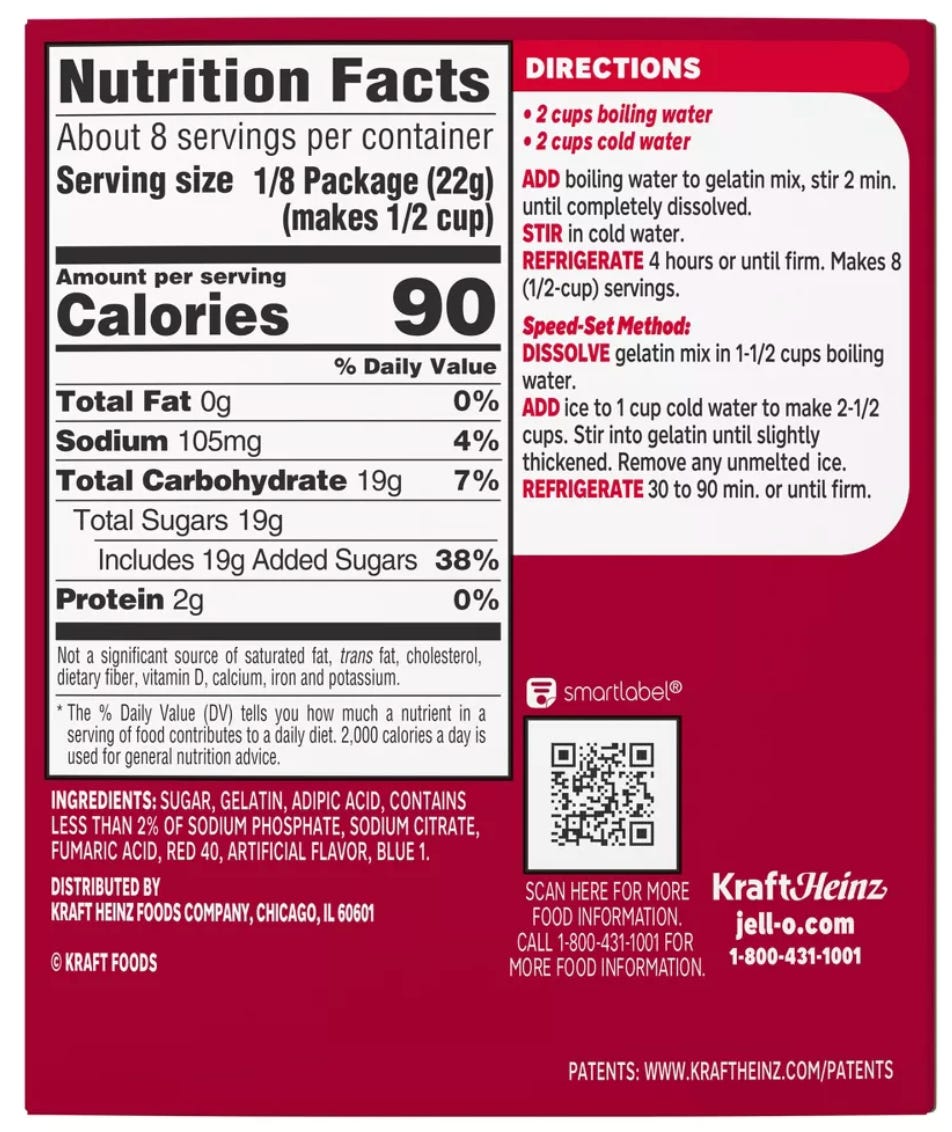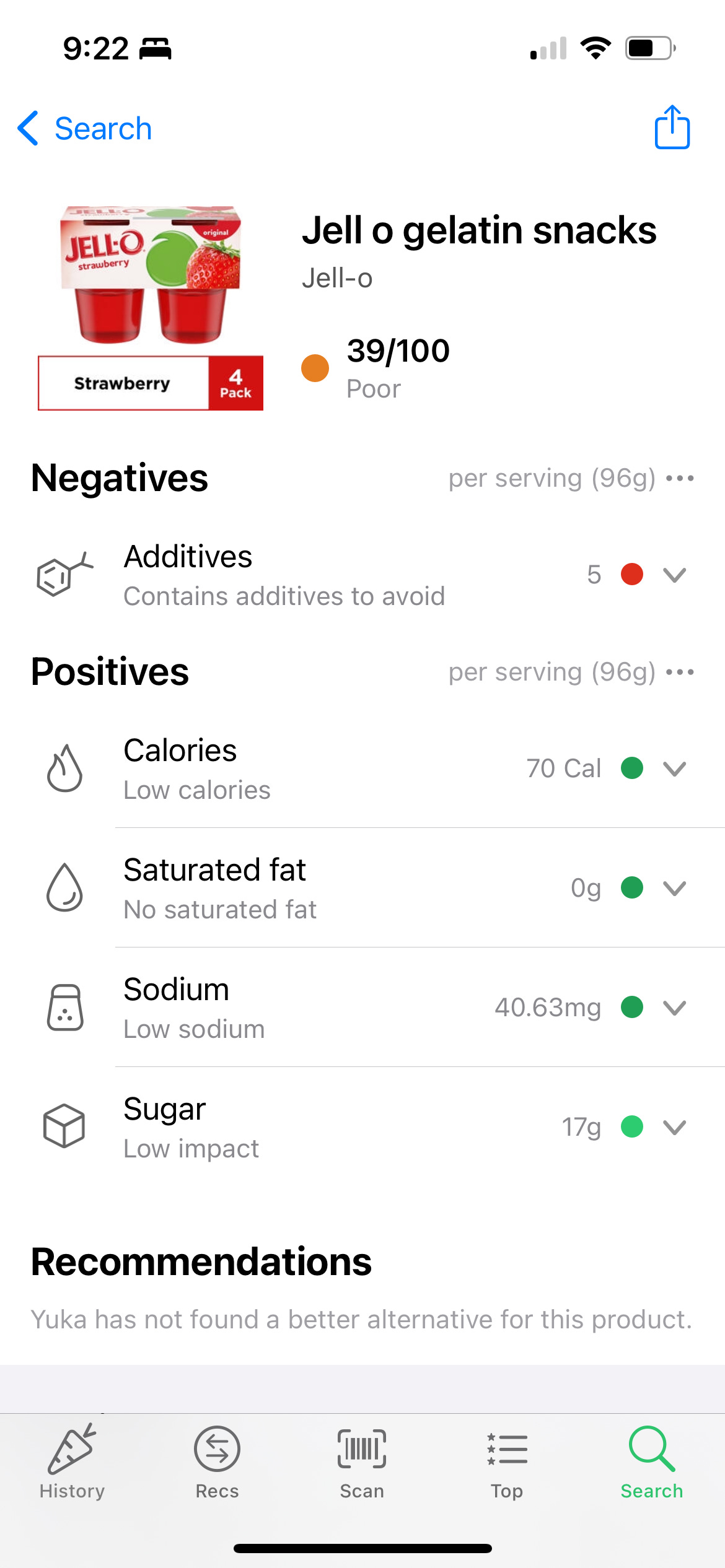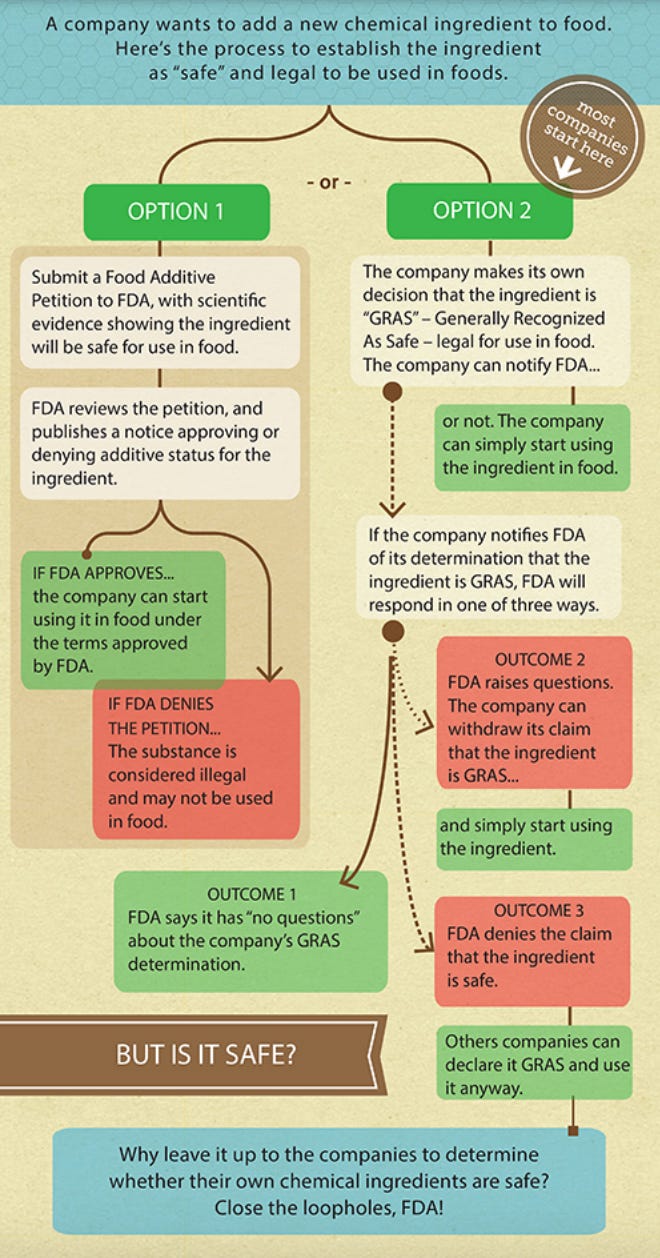A Crash Course in Decoding Packaged Food Ingredient Lists
Buzzwords to look for and an app to have on your phone.
8 years ago I started a plant-based, whole food ice cream brand called Izza Pops. I started the company after making ice cream in a tiny, 70’s grade San Francisco apartment kitchen over the course of many months because I found my body rejecting the dairy-based, hyper-processed ice cream I was used to buying in the grocery store. I thought, we have all these clean label brands in the snacking category (inspired by RxBar at the time), why don’t we have that option in ice cream? While Izza Pops didn’t work out (a story perhaps for another post, although many of you know it already!), the question still stands today: why don’t we have amazing clean-label options across all categories?
I will say, the grocery store and product labels have made significant strides since 2017. Oatly now has a Super Basic line that’s made without seed oils, I can (finally) buy my kids ketchup with no added sugar, and even boxed mac n’ cheese has cleaned up its act. But, there is still no universally agreed upon definition for “clean label”, which results in manufacturers, brands, and retailers all kind of just winging it. That means it’s up to us, the consumers, to develop ingredient vocabulary ourselves and decode what’s what so that we can make choices we feel good about at the end of the day.
Disclaimer: I’m not an expert at reading labels nor am I looking to shame product or ingredient choices. My house is far from being squeaky clean and I believe that there’s room for most everything in moderation. Like the name of this newsletter, Little Green Steps, my goal is to simply to inform and educate, and let you do the rest!
Buzzwords I look for in food:
Natural & artificial flavors - these are super common in processed foods. All flavors are made up of chemicals, but some are derived from natural sources (like plants, animals or insects) and some are man-made. While “natural flavors” originally come from natural sources, they undergo extensive processing that not everyone may consider “natural”. Plus, nonorganic flavors aren’t regulated so manufacturers can add preservatives and solvents that would make the claim "natural” sound like a serious stretch. As a big sparkling water drinker, I notice these in La Croix, Waterloo, and most all flavored sparkling water brands (except Spindrift!)
Added sugar - according to the American Heart Organization, American adults are eating 2-3x the recommended daily allowance of added sugar (on average) per day. If you usually skip over the sugar gram count on the ingredient panel, I encourage you to take a look. There is added sugar in literally e v e r y t h i n g. K and I once did Whole 30, which restricts any form of added sugar, and that was when I first noticed how seemingly impossible it is to avoid. I find kids snacks to be one of the worst culprits, which is highly depressing. While you’re looking for the sugar count, take a look at what kind of sweeteners are present. Are they natural sweeteners, like maple syrup or dates? Or are they highly processed (like high fructose corn syrup) or artificial (like aspartame or sucralose)? In general, natural sugars are better than refined sugars, though again, limiting any added sugar is best.
A note on sugar alcohols - often times I see products labeled as “sugar free” but they are actually sneakily sweetened with sugar alcohols. Sugar alcohols can be naturally derived from some fruits and vegetables, but are most often made through a chemical process when used in processed food. While they are less caloric and have a lower glycemic load than sugar, they can cause gastrointestinal issues - and I personally just don’t like the taste. Common sugar alcohols include sorbitol, xylitol, and erythritol.
Artificial preservatives & stabilizers - these are added to processed foods to help them have a longer shelf life, but studies have found links to cancer and hormonal disruption. Look for ingredient names like potassium bromate (banned in the EU but still allowed in the US), BHA, BHT, propyl gallate, sodium benzoate, and added nitrates.
Artificial colors & dyes - the California Office of Environmental Health Hazard Assessment found that the seven most common synthetic food dyes (Blue 1, Blue 2, Green 3, Red 3, Red 40, Yellow 5, and Yellow 6) can cause or exacerbate neurobehavioral problems in kids, incl. hyperactivity, inattentiveness, and restlessness. Europe has had restrictions on artificial dyes for years which has resulted in many food manufacturers removing them from labels oversees, but not here. Just this last year, the California School Food Safety Act banned the use of synthetic dyes in foods served in California public schools. Finally! Hopefully this enacts more widespread change but in the meantime, it’s so important to look at the label. When S was sick recently I went to pick up more ibuprofen and literally could not find a brand on the shelf without red dye. Why does medicine need to be a color?! I’ve also found it in Jell-o and a number of other products. Once you start looking for them, they are everywhere :O
An App to Help
There are a number of potentially harmful categories and ingredients to track, and it can feel hard to remember it all when you’re in the grocery store trying to quickly scan the ingredient label before your toddler knocks all the cans of beans off the shelf (just me?). I was reminded this past week when chatting with my brother-in-law (shoutout Nate if you’re reading this) about how much I love the app Yuka. It’s a completely independent company (meaning brands/manufacturers can’t influence the data) and you can scan or look up thousands of products to check the safety of their ingredients. Yuka is the most comprehensive app I’ve found (especially for food) but they are based in Europe so sometimes their catalog is missing some items. Still, the interface is awesome and I highly recommend downloading on your phone!
The Semblance of Regulation
So, if all of these ingredients are so bad, then why does the FDA allow them in our food? Well, there’s a legal ‘loophole’ that permits food manufacturers to determine (and add) ingredients that they’ve deemed ‘safe’ for us to eat, referred to as “Generally Recognized As Safe”. This means that new chemicals, preservatives, and additives can be added to food without independent testing or long-term safety studies.
The “GRAS” classification was originally intended for existing ingredients already found in foods like baking soda and vinegar. But, since 1997 the FDA has allowed manufacturers to determine on their own which ingredients fall under this category, permitting them to do their own research on an ingredient’s safety before going to market. The FDA suggests (but does not require) that companies notify them about the use of such ingredients and their findings, but in practice, many ingredients have been added without any notification. According to the EWG, about 99% of all food chemicals introduced since 2000 were greenlighted for use by the FDA. And since the entire submission process is voluntary, even if the FDA raises concerns about a GRAS submission, the company can just…use it anyway.
Our Power to Choose
There are a LOT of ingredients used in our food these days, many of which have not been vetted by the FDA. Studies have shown that the broad categories of ingredients I called out above can be harmful. And even if food companies each use these ingredients in moderation, if they’re ALL using them and these foods make up the majority of our diets, then you can see how this could pose a real problem for our health.
The good news is, we have the power to choose as consumers. We can try to eat whole or minimally processed foods as much as possible, and try to limit processed foods. When we do eat processed foods, we can be label literate and at least know what we’re eating and serving our families. Food manufacturers won’t remove these ingredients unless regulation gets put in place OR consumers demand it. We can’t control the former but we can start by just being more mindful and influencing the latter.
Hope you found this LGS helpful! I’m on a roll now with two posts back to back. My goal this month is to post every week. Let me know if you have a topic suggestion!
<3 A




